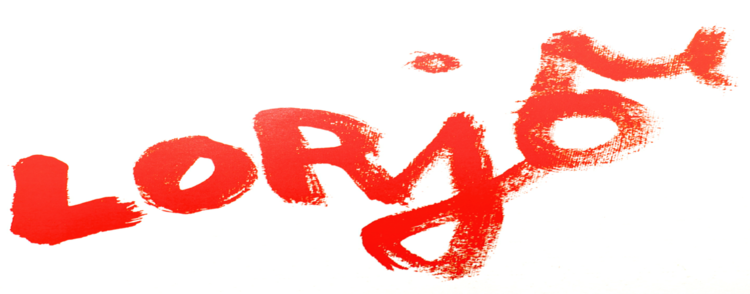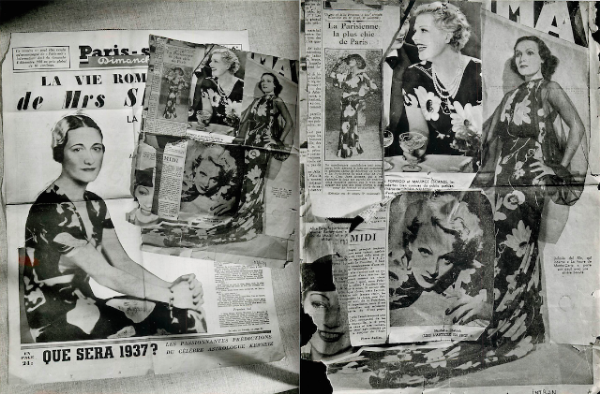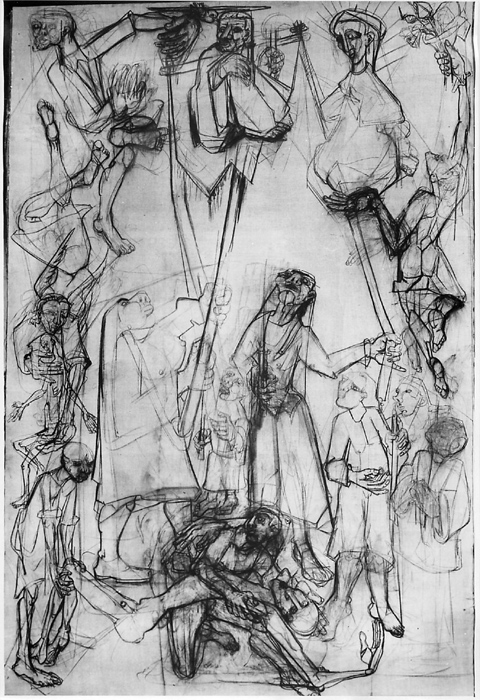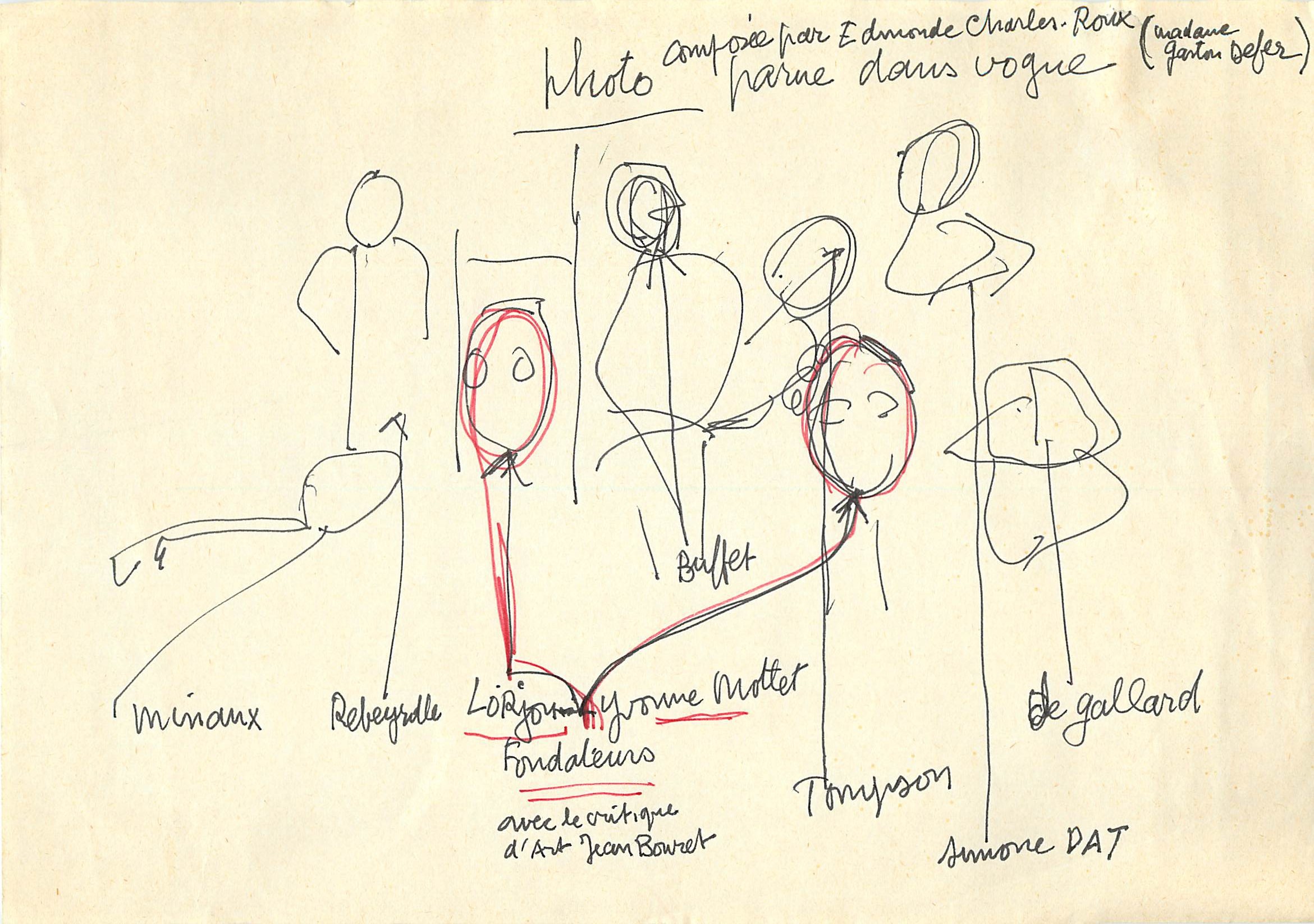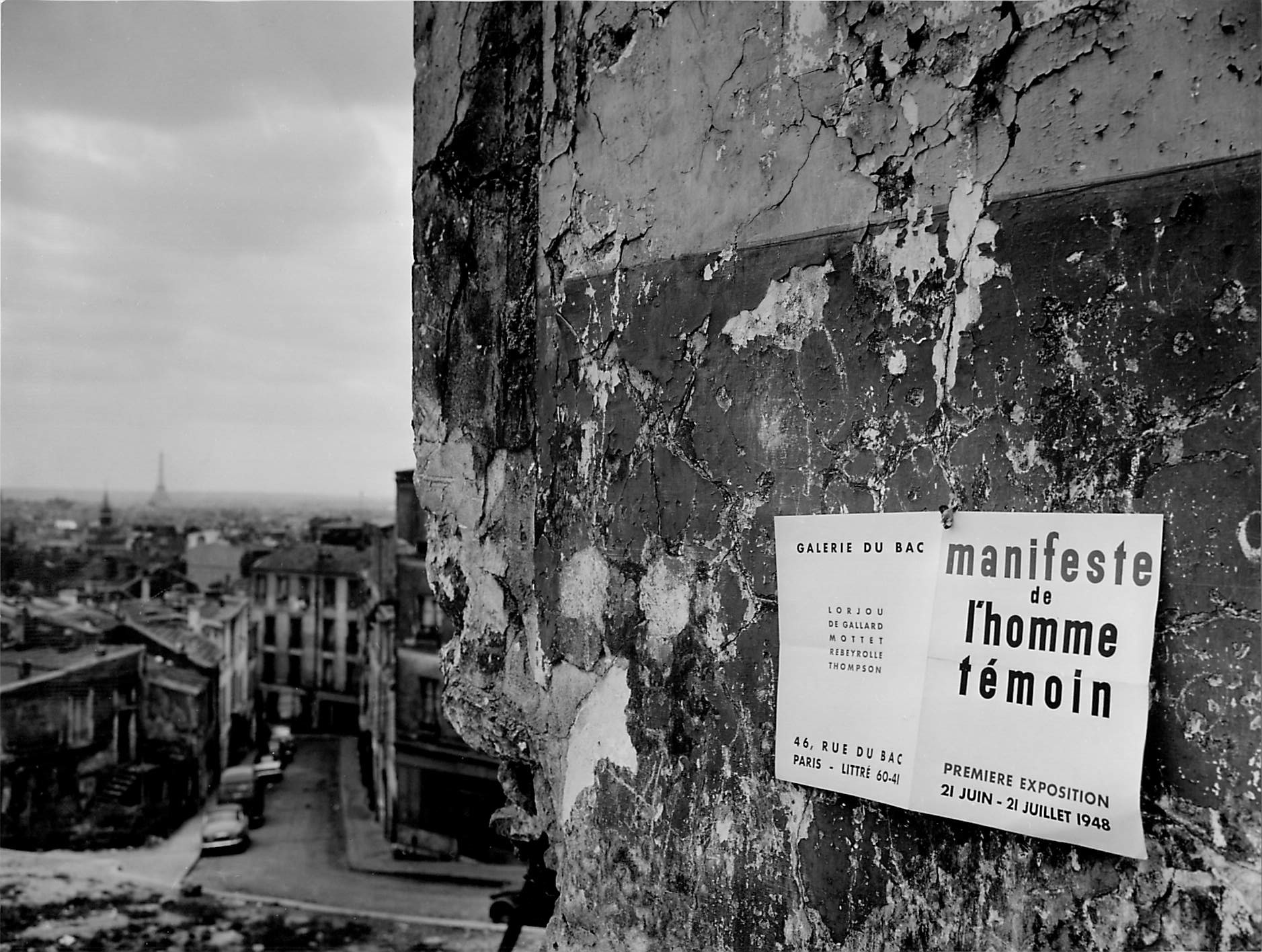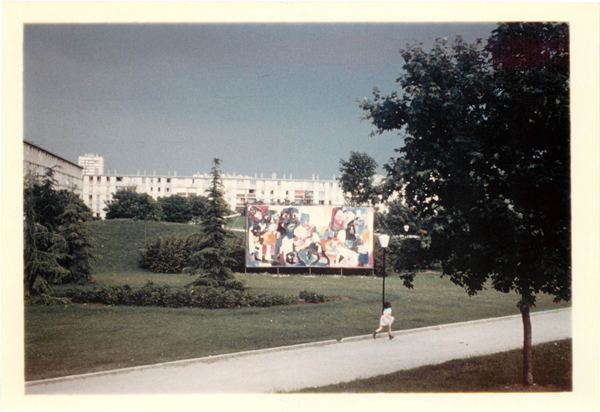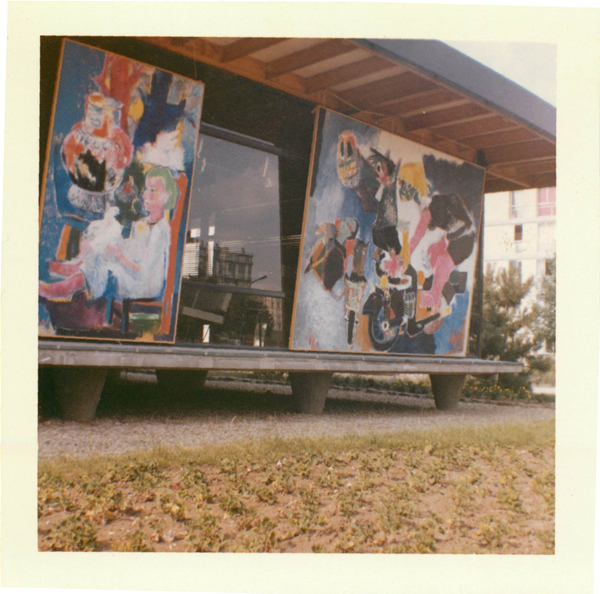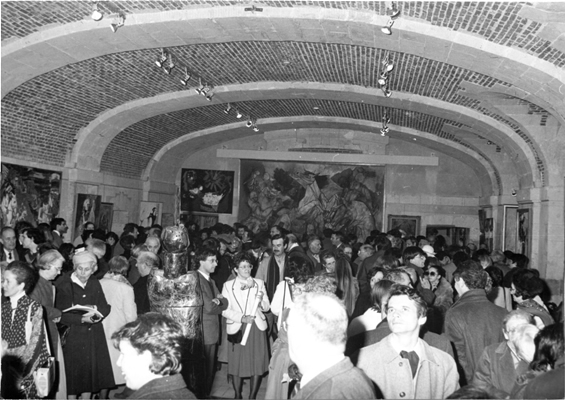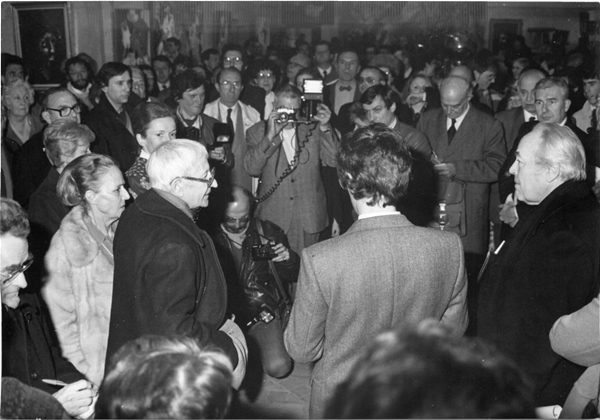Chronology
A resume of Lorjou's life and career, starting with his upbringing as a poor youth in the streets of Paris to his founding of the Homme Temoin movement and engagement in other artistic endeavors.
1908 Lorjou is born on September 9th to a poor family in the Loir et Cher department of France. He is the youngest of 3 children.
1924 He leaves Blois to live in Paris where he lives in extreme poverty in a small room on the rue Raspail. His funds eventually run out so he sleeps in the Orsay train station.
1925 He finds employment with the silk house Ducharne. There, he designs patterns for prints that become sought by fashion houses ranging from Jacques Fath, Balmain, Lanvin, and Christian Dior and worn by many notable women of the period. At Ducharne, Lorjou meets his companion Yvonne Mottet, also an artist.
Above, some of Lorjou's large motif silk patterns worn by Marlene Dietrich, Dolores del Rio, Elvire Popesco, Jane Aubert and Wallis Simpson, Duchess of Windsor.
1931 Lorjou's first trip to Spain. He visits the Prado Museum in Madrid. He discovers the strong expressive styles of El Greco, Velázquez and Goya.
1934 Lorjou and Mottet set up an art studio in Montmarte, Paris. From this studio, Lorjou creates his first works inspired by current world events, such as "La conquête de l'Abyssinie par les Italiens."
1939 Lorjou returns to Blois as German troops begin invading France. During this period, he paints tirelessly while actively helping citizens of Blois. During his short time as mayor, he recalls "housing, treating, burying, [and] feeding..." many of the town's citizens.
1942 He displays works for the first time at the Salon des Indépendants.
1945 Lorjou holds his first solo exhibition in Paris at the Galerie du Bac. That same year, he paints the "Miracle de Lourdes" (Collection Venice Museum) and displays his paintings in numerous national and international exhibits.
1946 The Galerie du Bac holds an exhibition dedicated to the emerging style of 'Expressionist' artists from different countries: Germany, Belgium, and France. The artists represented include Soutine, Rouault, Goerg, Ensor, Beckman, and Lorjou. Later that year, Lorjou also displays works at the Salon des Indépendants before being invited to a one man show in London.
1948 Lorjou is named co-recipient of the coveted 'Prix de la Critique' award with Bernard Buffet. The same year, Lorjou forms the artistic group L'Homme Témoin with the art critic Jean Bouret to defend figurative painting. This group, originally composed of 5 members, exhibits at the Galerie du Bac.
Bernard Buffet and Bernard Lorjou in 1948
1949 The second manifest of the Homme Temoin held at the Galerie Claude in Paris attracts other artists to the group, among them Bernard Buffet, Jean Couty, Minaux, and Simone Dat.
1950 Lorjou paints and exhibits a series of large format paintings inspired from current events, namely 'L'Age Atomique,' today owned by the French Government and held at the Centre Georges Pompidou in Paris.
1951 Lorjou paints 'La Conference' (Collection Warsow Museum).
1952 He paints 'La Peste en Beauce' forewarning against the threat of bacteriological warfare. He also paints "Matin du Couronnement," a controversial tribute to Queen Elizabeth II.
1953 Lorjou begins a ten year collaboration with Georges and Daniel Wildenstein.
1954 He holds his first one man show in the United States with the Galerie Wildenstein. Later that year, the Museum Kamakura holds an exhibition for Lorjou and Mottet.
1956 Lorjou paints 'Le Bouc et l'Arlequin' and "The Undertaker of the Rond-Point."
1957 Lorjou constructs a large makeshift shack on the Esplanade of the Invalides in Paris to exhibit his "Massacres de Rambouillet," a collection of works in reaction to the Soviet Union's invasion of Budapest.
1958 He relocates his shack to the "Exposition Universelle" in Brussells, Belgium where he exhibits works for the Roman de Renart, namely his painting "Renart à Sakiet", measuring over 30 feet and denouncing the war in Algeria. This demonstration angers the French government.
1959 Lorjou exhibits works under the theme of "Le Bal des Fols" at the Wildenstein Gallery in Paris. The theme is inspired by the suicide of Lorjou's mentally ill sister.
1960 He creates politically charged works such as "The Rattle" and "Le Guide" satirizing General de Gaulle and his handling of the Algerian war.
1962 He presents his painting titled "Strike Force" at the Moulin Rouge. Lorjou also paints a series entitled "Les Rois: De Charlemagne à Charles de Gaulle."
1963 He rents a barge named La Touraine to navigate up and down the Seine river in Paris for 3 days. On the barge are put on display a number of monumental paintings, namely "La Mort de John XXIII", "Grimau's Blood", and "July 14th." The barge is eventually stopped by local authorities.
1964 Lorjou exhibits a series of works at the A.Gattlen Galerie in Lausanne titled "Blancs et Noirs" denouncing racism. The exhibition is prolonged due to popular demand. That year, he also paints the "Dallas Murder Show."
1965 An open air exhibit is held in the northern Parisian suburb of Sarcelles titled "Centaures et Motocyclettes." That year, Lorjou carves a series of wood engravings to illustrate Guillaume Appolinaire's "Le Bestiaire."
1966 Lorjou moves his summer residence to Spain. He is commissioned to paint the ceiling of the African Room for the Musée de la Chasse et de la Nature, Hotel Guenegaud (Sommer Foundation), in Paris. He is also commissioned to create posters for the Civic Information Center (CIC) to stands against abstentionism. In addition, he creates the Civic Trophy, a ceramic sculpture offered to the commune with the highest percentage of voter turnout.
1967 Lorjou is commissioned by the diocese to paint a séries of biblical parables (180 square feet) and "Christ en Gloire" to decorate the Chapel for retired priests in Blois (Maison des Prêtres de Blois).
1968 At the request of the United Nations, Lorjou creates a poster for the fight against hunger. In the same year, he organizes moving exhibitions around Paris titled "Le Camion Rouge," in allusion to the predominantly working class communist suburbs of Paris. The works presented in these exhibitions display current world events and engage their viewers to gain awareness of the events taking place around them. Yvonne Mottet, his wife and companion of 40 years, dies of leukemia in September.
1969 Lorjou Paints, draws, and sculpts relentlessly in Marbella, Spain where he rents an estate named the "Casa Grande". Moved by the Sharon Tate murder in August, he begins painting a series on the event. He speaks to Roman Polanski, Tate's husband, who consents to Lorjou displaying the series. The painting entitled "The Marbella studio" is purchased by the Museum of Modern Art in Paris.
1970 Art dealer Paul Petrides invites Lorjou to exhibit gouaches, drawings, and canvases painted in Marbella under the title 'Murderers and Flowers.' Lorjou later exhibits his controversial series 'The Sharon Tate Assassination' at the Musée Galliéra.
1971 "The Sharon Tate Assassination" exhibit travels to Belgium and Japan. Lorjou establishes his summer residence at the Garde Freinet on the French Riviera. At the Galerie Tallien in St. Tropez, he exhibits his works for "Sacred Sex".
Lorjou donating his Silver Horseman for cancer research with french President Georges Pompidou in attendance.
